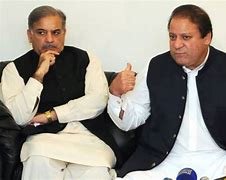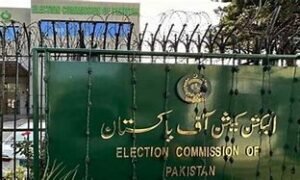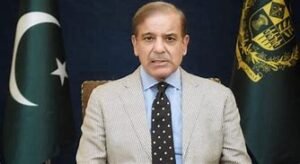Shehbaz Sharif, the younger brother of former Prime Minister Nawaz Sharif, is set to become Pakistan’s next Prime Minister after a post-poll alliance of prominent political groups led by them reached an agreement to form a coalition government following last week’s elections, which delivered a split mandate.

The sudden action means that Imran Khan’s party will not remain in power, despite independent candidates endorsed by his Pakistan Tehreek-e-Insaf (PTI) gaining the most seats in Parliament in the February 8 elections, which were plagued by allegations of cheating.
On Tuesday (27th February) night, the Pakistan Muslim League-Nawaz (PML-N) chose 72-year-old Shehbaz as its prime ministerial candidate, replacing party supremo and three-time previous premier Nawaz Sharif.
Shehbaz, Asif Ali Zardari of Pakistan People’s Party, and Khalid Maqbool Siddiqui of Muttahida Qaumi Movement Pakistan (MQM-P) previously met for a consultative meeting at the home of Shujaat Hussain of Pakistan Muslim League-Quaid (PML-Q) and reached an agreement on government formation.
“Today, we came together to inform the people that we all accept the split mandate. I am grateful to Zardari and Bilawal (Bhutto) for deciding for their party to vote for the PML-N,” he stated.
Earlier on Tuesday, Pakistan People’s Party leader Bilawal Bhutto Zardari said that he was abandoning his campaign for prime minister, and that his party will endorse the PML-N nominee. “Nawaz Sharif has thanked the political parties which provided support to the PML-N (in forming the upcoming government) and expressed hope that through such decisions Pakistan will come out of crises,” she went on to say.
Why Nawaz Sharif did not get chaired as PM?

Maryam Nawaz, Nawaz Sharif’s daughter and political successor, has stated that this was because her father did not want to lead a coalition administration. Pakistan’s elections produced a surprising result this time, with independents backed by Imran Khan’s PTI gaining a large number of seats.
“After the split mandate, Nawaz Sharif withdrew from becoming Prime Minister for the fourth time.””Those who know Nawaz understand that he is not interested in leading a coalition government,” Maryam stated on Wednesday.
“There is no truth in the claim that Nawaz has decided to leave politics.” He would supervise the federal and Punjab administrations and fulfil his responsibilities. Shehbaz and I are his troops, obligated to obey his orders,” she continued.
Nawaz will not only be involved in politics for the next five years, but he will also monitor the PML-N-led administrations in Punjab and at the Centre, according to Maryam, the PML-N senior vice president.
The current position in the elections

According to the Election Commission of Pakistan, the six parties — the PML-N, PPP, MQM-P, PML-Q, IPP (Istehkam-e-Pakistan Party), and Balochistan Awami Party (BAP) — won a total of 152 general seats after announcing their plans to join a coalition led by Shehbaz.
This plainly demonstrates that these parties would easily obtain the minimum needed number of 169 seats to form a government at the Centre, even after adding 60 women and 10 minority members to their total. According to reports, the formidable Pakistan Army backs the PML-N.
About Shehbaz Sharif
Shehbaz, 72, was Pakistan’s Prime Minister until August 2023, while the National Assembly was dissolved for new elections. He came to power little over a year ago, in April 2022, following Imran Khan’s fall. He previously served as Punjab’s Chief Minister three times: from 1997 to 1999, when Pervez Musharraf banished him and his family to Saudi Arabia; from 2008 to 2013; and from 2013 to 2018.

He is industrialist Muhammad Sharif’s second son and a member of the family-owned Ittefaq Group of steel businesses. The family is originally from Anantnag, Jammu & Kashmir.
Shehbaz was recognised as Punjab’s Chief Minister for his effective working style and quick infrastructure development, which included the introduction of the Lahore Metrobus, a contemporary means of mass transportation. He also launched various social development initiatives.
Shehbaz was less popular as Prime Minister; while he managed to hold a heterogeneous coalition together, his administration was heavily criticised for how it handled the economy in the face of intense IMF inspection and rising inflation. That he rose to power as the apparent front for the military administration, deposing the popular Imran Khan, did not assist his image.
Previously, Sharif faced charges of corruption and police violence during his tenure as Chief Minister.











Comments 1